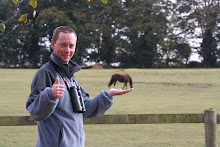The water levels from 360 hide were nice and low but most of the small waders had moved onto the grassland near the seawall as the water levels had just been dropped there exposing a nice load of new food so we have to be content with close views of both little and great white egret along with the whooper swan that has been hanging around for the summer.
From the seawall it was much easier to see the birds both on the grassland and the saltmarsh. A nice little group of ca25 yellow wags were feeding at the bottom of the seawall although they were very flighty, probably because of the hunting kestrel and sparrowhawk we saw later in the morning.
The great thing about viewing the grassland was the extra height to look down into the vegetation where many of the small waders were feeding. 80 dunlin in a couple of groups along the bank contained 8 little stint, 20 ruff and a nice little party of 4 spotted redshanks. Wigeon numbers were already building up with several hundred feeding close to the back. Before heading off for lunch, a group of other birders pointed out a distant peregrine perched out in the saltmarsh.
Following a rather filling lunch of sausage, chips and curry sauce, we ended the trip at the Roads Farm reservoir looking for the red necked grebe. Amongst the wigeon and little grebes the bird was actually quite hard to locate especially as it was diving loads to start with. Once it had managed to swallow a tricky fish it settled down and showed well. Although they are a regular species off the Norfolk coast in winter it was good to get some nice to get such good views. We didn't manage to add any more wood sands to the list (there had been 3) but we did have a calling green sand close by that we didn't see.
All in all it was a good day. Lots of birds, plenty of bants and good company.








No comments:
Post a Comment